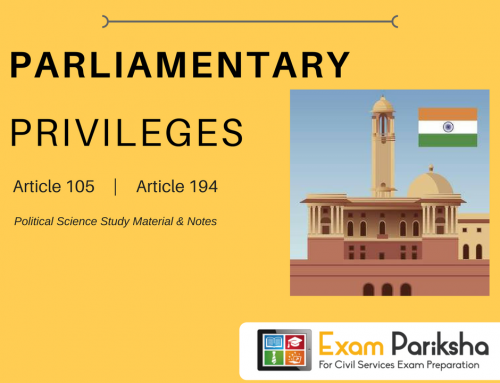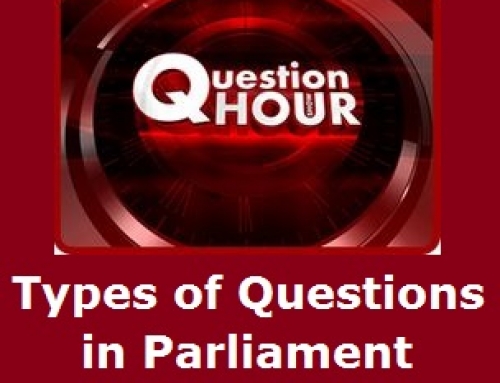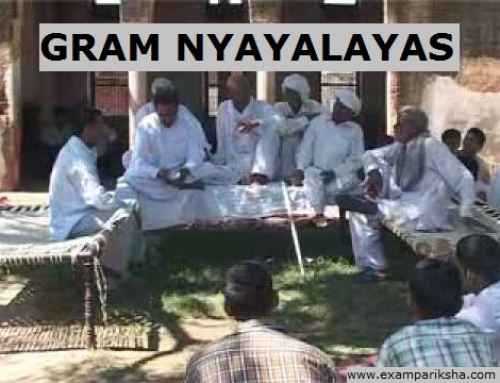While the Constitution of India was being drafted, India was going through a period of stress and strain because of partition, communal riots and the problem of princely states merger including Kashmir. Therefore, the Constitution-makers gave the Central Government the necessary authority, to ensure proper redressal of issue in case of unusual circumstances of law and order, when the security and stability of the country is threatened by internal and external threats. These emergency provisions were made part of the Constitution to safeguard and protect the security, integrity and stability of the country and effective functioning of Governments.
Grounds of Crisis Declaration:
Provisions have been made in the Constitution for dealing with extraordinary situations that may threaten the peace, security, stability and governance of the country or a part . There are three types of crisis situations that are envisaged:
- When there is a war or external aggression has been committed or there is threat of the same, or if internal disturbances amounting to armed rebellion taking place.
- When it becomes impossible for the government of a State to be carried on in accordance with the Constitution.
- If the credit or financial stability of the country is threatened.
Proclamation of National Emergency (Article 352)
Why? The Constitution of India has provision for imposition of emergency caused by war, external aggression or internal rebellion. This is called the National Emergency.
Who? This type of emergency can be declared by the President of India if he is satisfied that the situation is very grave and the security of India or any part thereof is threatened or is likely to be threatened either (i) by war or external aggression or (ii) by armed rebellion within the country.
It can also be on the ground of only perceived threat of war or aggression.
By Whose Sanction? According to the 44th Amendment of the Constitution, the President can declare such an emergency only if the Cabinet headed by PM recommends in writing to him.
Approval? It has to be approved by both the Houses of Parliament by special majority – absolute majority of the total membership of the Houses as well as 2/3 majority of members present and voting within one month, otherwise the proclamation ceases to operate.
In case the Lok Sabha stands dissolved at the time of proclamation of emergency or is not in session, it has to be approved by the Rajya Sabha within one month and later on by the Lok Sabha also within one month of the start of its next session.
Duration? Once approved by the Parliament, the emergency remains in force for six months from the date of proclamation. In case it has to be extended beyond six months, another resolution has to be passed by the Parliament. On lack of revival resolution, the emergency proclamation ceases to be in force after six months.
Revoking the emergency? If the situation improves, it can be revoked by another proclamation by the President of India. The 44th Amendment of the Constitution provides that ten per cent or more members of the Lok Sabha can requisition a meeting of the Lok Sabha and in that meeting, it can disapprove or revoke the emergency by a simple majority. In such a case emergency will immediately become inoperative.
History of National Emergency: It has been declared in our country three times so far.
- For the first time, emergency was declared on 26 October 1962 after China attacked our borders in the North East Arunachal Pradesh. This National Emergency lasted till 10 January 1968. It was in force at the time of Pakistan War in 1965.
- For the second time, it was declared on 3 December 1971 due to the second India-Pakistan War and was lifted on 21 March 1977. The first two emergencies were on ground of ‘external aggression’.
- The third National Emergency was proclaimed on the basis of ‘internal disturbance’. It was imposed on 25 June 1975. This emergency is called “internal emergency”. This proclamation has been the most Controversial political move of Independent India. That is because this was imposed while the second National emergency of 1971 was in effect and the government machinery was in control of everything already. Both second and third proclaimations were revoked on 21st March 1977.
P.S.- The Shah Commission was appointed to investigate into the circumstances for declaration of third emergency in 1975. It found third emergency unjustified. Hence the 44th Amendment Act was enacted in 1978 to remove the term ‘ internal disturbance’ and replace it with ‘Armed rebellion’ to prevent misuse of emergency powers. Other safeguards were also introduces by this amendment.
Effects of National Emergency: The declaration of National Emergency has effects on the Fundamental rights of individuals and on the Centre-State Relations.
(i)The federal form of the Constitution changes into unitary. Authority of the Centre increases and the Parliament assumes power to make laws for the entire country or any specific part, even on the State List.
(ii)The President can issue directions to the States for exercise of the executive power of the states.
(iii)During the proclamation, the Lok Sabha can extend its tenure by one year at a time. But it cannot be extended beyond six months after the proclamation ceases to operate. Similarly, the tenure of State Assemblies can also be extended.
(iv) During emergency, the President can modify the provisions regarding distribution of revenues between the Union and the States.
(v) The Fundamental Rights under Article 19 are automatically suspended till the end of the emergency. But according to the 44th Amendment, Freedoms under Article 19 can be suspended only in case of National emergency under article 352.
Emergency due to Failure of Constitutional Machinery in a State( Article 356)
Why? Under Article 356, the President can issue a proclamation to impose emergency in a state if he is satisfied on receipt of a report from the Governor of the State, or otherwise, that a situation has arisen under which the Government of the State cannot be carried on smoothly. It is also called the President’s Rule.
Approval ? It must be approved by both the Houses of Parliament within two months, otherwise the proclamation ceases to operate. After approval, the proclamation remains valid for six months at a time. It can be extended for another six months but not beyond a year. But, emergency in a State can be extended beyond one year if – (a)
- A National Emergency is already in operation
- The Election Commission certifies that the election to the State Assembly cannot be held.
History of President’s rule: This has been imposed in most of the States at some time or the other. It was imposed for the first time in the Punjab in 1951. In 1957, the Kerala State was put under the President’s Rule. There have been many instances of misuse of ‘constitutional breakdown’.
In all, there are more than hundred times that emergency has been imposed.
Effects of President’s Rule in a State: It has the following effects
(i)The President can take over all or any of the functions of the State Government or he may vest all or any of those functions with the Governor or any other executive authority.
(ii)The President may dissolve the State Legislative Assembly or suspend it. He can authorise the Parliament to make laws on behalf of the State Legislature.
(iii)The President can make provisions necessary to handle the situation.
Criticism: Article 356 has been very controversially used in spite of safeguards under the 44th Amendment Act. There is a demand for its deletion or making provision in the Constitution to restrict the misuse of this Article.
The Sarkaria Commission was appointed to review the Centre–State relations recommended that Article 356 should be used only as a last resort. The Commission also suggested that the State legislative Assembly should not be dissolved unless the proclamation is approved by the Parliament. It further suggested that all possibilities of forming an alternative government should be fully explored before the Centre imposes emergency in a State on grounds of breakdown of constitutional machinery.
Financial Emergency (Article 360)
Why? If the President is satisfied that the financial stability or credit of India or any of its part is in danger, he can declare a state of Financial Emergency.
Approval? It has to be approved by both Houses of Parliament within two months of its proclaimation by simple majority.
Termination of Financial emergency? It can operate as long as required. And may be revoked by the President at anytime by a subsequent proclamation. It would ot require parliamentary approval.
History? There have been no instances of imposition of Financial Emergency in India in the past. Though the nation came very close to such a state in 1990 crisis but Emergency was not proclaimed.
Effects of Financial Emergency:
- The Union Government extends its executive authority over the States and can give direction to any of the States regarding financial matters.
- The President may ask the States to reduce the salaries and allowances of all or any class of persons in government service.
- The President may ask the States to reserve all the money bills for the consideration of the Parliament after they are passed by the State Legislature.
- The President can give directions for the reduction of salaries and allowances of the Central Government employees including the Judges of the Supreme Court and the High Courts.




